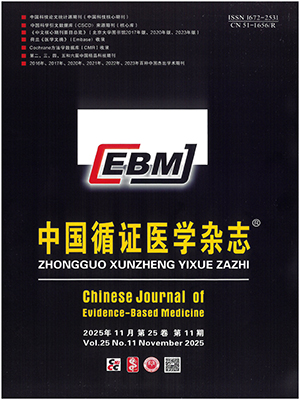| 1. |
Wang W, Jiang B, Sun H, <italic>et al</italic>. Prevalence, incidence, and mortality of stroke in China: results from a nationwide population-based survey of 480?687 adults. Circulation, 2017, 135(8): 759-771.
|
| 2. |
任占云, 湯武裝, 樊垚, 等. 超敏C-反應蛋白與缺血性腦卒中發病的前瞻性隊列研究. 中華疾病控制雜志, 2018, 22(1): 29-32, 51.
|
| 3. |
Feigin VL. Stroke in developing countries: can the epidemic be stopped and outcomes improved? Lancet Neurol, 2007, 6(2): 94-97.
|
| 4. |
李娟, 黃東輝, 王沖, 等. 遼寧省農村地區2013年腦卒中早死所致的疾病負擔分析. 中華疾病控制雜志, 2017, 21(3): 255-260.
|
| 5. |
Chae J, Mascarenhas D, Yu DT, <italic>et al</italic>. Poststroke shoulder pain: its relationship to motor impairment, activity limitation, and quality of life. Arch Phys Med Rehabil, 2007, 88(3): 298-301.
|
| 6. |
Nadler M, Pauls MMH. Shoulder orthoses for the prevention and reduction of hemiplegic shoulder pain and subluxation: systematic review. Clin Rehabil, 2017, 31(4): 444-453.
|
| 7. |
Sanchis MN, Lluch E, Nijs J, <italic>et al</italic>. The role of central sensitization in shoulder pain: A systematic literature review. Semin Arthritis Rheum, 2015, 44(6): 710-716.
|
| 8. |
Vuagnat H, Chantraine A. Shoulder pain in hemiplegia revisited: contribution of functional electrical stimulation and other therapies. J Rehabil Med, 2003, 35(2): 49-54.
|
| 9. |
趙鈦. 現代偏癱治療學. 北京: 人民軍醫出版社, 1996: 265-267.
|
| 10. |
Koog YH, Jin SS, Yoon K, <italic>et al</italic>. Interventions for hemiplegic shoulder pain: systematic review of randomised controlled trials. Disabil Rehabil, 2010, 32(4): 282-291.
|
| 11. |
Langhorne P, Stott DJ, Robertson L, <italic>et al</italic>. Medical complications after stroke: a multicenter study. Stroke, 2000, 31(6): 1223-1229.
|
| 12. |
McLean DE. Medical complications experienced by a cohort of stroke survivors during inpatient, tertiary-level stroke rehabilitation. Arch Phys Med Rehabil, 2004, 85(3): 466-469.
|
| 13. |
Xiantao Z, Yonggang Z, Joey SW, <italic>et al</italic>. The methodological quality assessment tools for preclinical and clinical studies, systematic review and meta-analysis, and clinical practice guideline: a systematic review. J Evid Based Med, 2015, 8(1): 2-10.
|
| 14. |
Haidich AB. Meta-analysis in medical research. Hippokratia, 2010, 14(1): 29-37.
|
| 15. |
Aras MD, Gokkaya NK, Comert D, <italic>et al</italic>. Shoulder pain in hemiplegia: results from a national rehabilitation hospital in Turkey. Am J Phys Med Rehabil, 2004, 83(9): 713-719.
|
| 16. |
Demirci A, Ocek B, Koseoglu F. Shoulder pain in hemiplegic patients. J PMR Sci, 2007, 1(5): 25-30.
|
| 17. |
Dromerick AW, Edwards DF, Kumar A. Hemiplegic shoulder pain syndrome: frequency and characteristics during inpatient stroke rehabilitation. Arch Phys Med Rehabil, 2008, 89(8): 1589-1593.
|
| 18. |
Barlak A, Unsal S, Kaya K, <italic>et al</italic>. Poststroke shoulder pain in Turkish stroke patients: relationship with clinical factors and functional outcomes. Int J Rehabil Res, 2009, 32(4): 309-315.
|
| 19. |
Klit H, Finnerup NB, Overvad K, <italic>et al</italic>. Pain following stroke: a population-based follow-up study. PloS One, 2011, 6(11): e27607.
|
| 20. |
王帥, 劉志華, 王琳, 等. 腦卒中后肩痛患者肩部紅外熱成像觀察. 中國康復醫學雜志, 2014, 29(7): 645-649.
|
| 21. |
賈敏, 劉志華, 于曉明, 等. 腦卒中偏癱肩痛患者的超聲圖像表現. 中國康復醫學雜志, 2014, 29(2): 127-132.
|
| 22. |
Karaahmet OZ, Eksioglu E, Gurcay E, <italic>et al</italic>. Hemiplegic shoulder pain: associated factors and rehabilitation outcomes of hemiplegic patients with and without shoulder pain. Top Stroke Rehabil, 2014, 21(3): 237-245.
|
| 23. |
Paolucci S, Iosa M, Toni D, <italic>et al</italic>. Prevalence and time course of post-stroke pain: a multicenter prospective hospital-based study. Pain Medicine, 2016, 17(5): 924-930.
|
| 24. |
Janus-Laszuk B, Mirowska-Guzel D, Sarzynska-Dlugosz I, <italic>et al</italic>. Effect of medical complications on the after-stroke rehabilitation outcome. NeuroRehabilitation, 2017, 40(2): 223-232.
|
| 25. |
崔高亮, 田玉紅. 腦卒中患者軀干上部異常姿勢與肩峰撞擊綜合征的相關性分析. 中華物理醫學與康復雜志, 2017, 39(9): 668-671.
|
| 26. |
王其響, 鞏尊科, 王世雁, 等. 肌骨超聲在腦卒中后偏癱肩痛軟組織病變的量化評定. 臨床與病理雜志, 2018, 38(1): 96-101.
|
| 27. |
Menoux D, Jousse M, Quintaine V, <italic>et al</italic>. Decrease in post-stroke spasticity and shoulder pain prevalence over the last 15 years. Ann Phys Rehabil Med, 2019, 62(6): 403-408.
|
| 28. |
徐菲, 金平, 王玉. 腦卒中后癲癇發作的相關危險因素分析. 中華疾病控制雜志, 2017, 21(2): 179-182.
|
| 29. |
Turner-Stokes L, Jackson D. Shoulder pain after stroke: a review of the evidence base to inform the development of an integrated care pathway. Clin Rehabil, 2002, 16(3): 276-298.
|
| 30. |
Payne LZ, Deng XH, Craig EV, <italic>et al</italic>. The combined dynamic and static contributions to subacromial impingement. A biomechanical analysis. Am J Sports Med, 1997, 25(6): 801-808.
|
| 31. |
Gilmore PE, Spaulding SJ, Vandervoort AA. Hemiplegic shoulder pain: implications for occupational therapy treatment. Can J Occup Ther, 2004, 71(1): 36-46.
|
| 32. |
Machado LA, de Souza Mv, Ferreira PH, <italic>et al</italic>. The McKenzie method for low back pain: a systematic review of the literature with a meta-analysis approach. Spine (Phila Pa 1976), 2006, 31(9): E254-E262.
|
| 33. |
Bi X, Zhao J, Zhao L, <italic>et al</italic>. Pelvic floor muscle exercise for chronic low back pain. J Int Med Res, 2013, 41(1): 146-152.
|
| 34. |
Comerford MJ, Mottram SL. Functional stability re-training: principles and strategies for managing mechanical dysfunction. Man Ther, 2001, 6(1): 3-14.
|
| 35. |
Chae J, Jedlicka L. Subacromial corticosteroid injection for poststroke shoulder pain: an exploratory prospective case series. Arch Phys Med Rehabil, 2009, 90(3): 501-506.
|
| 36. |
Griffin C. Management of the hemiplegic shoulder complex. Top Stroke Rehabil, 2014, 21(4): 316-318.
|
| 37. |
謝軍, 韓造木, 尹琬凌. 音樂療法對腦卒中患者認知和情緒的效果. 中國康復理論與實踐, 2019, 25(9): 1075-1078.
|




